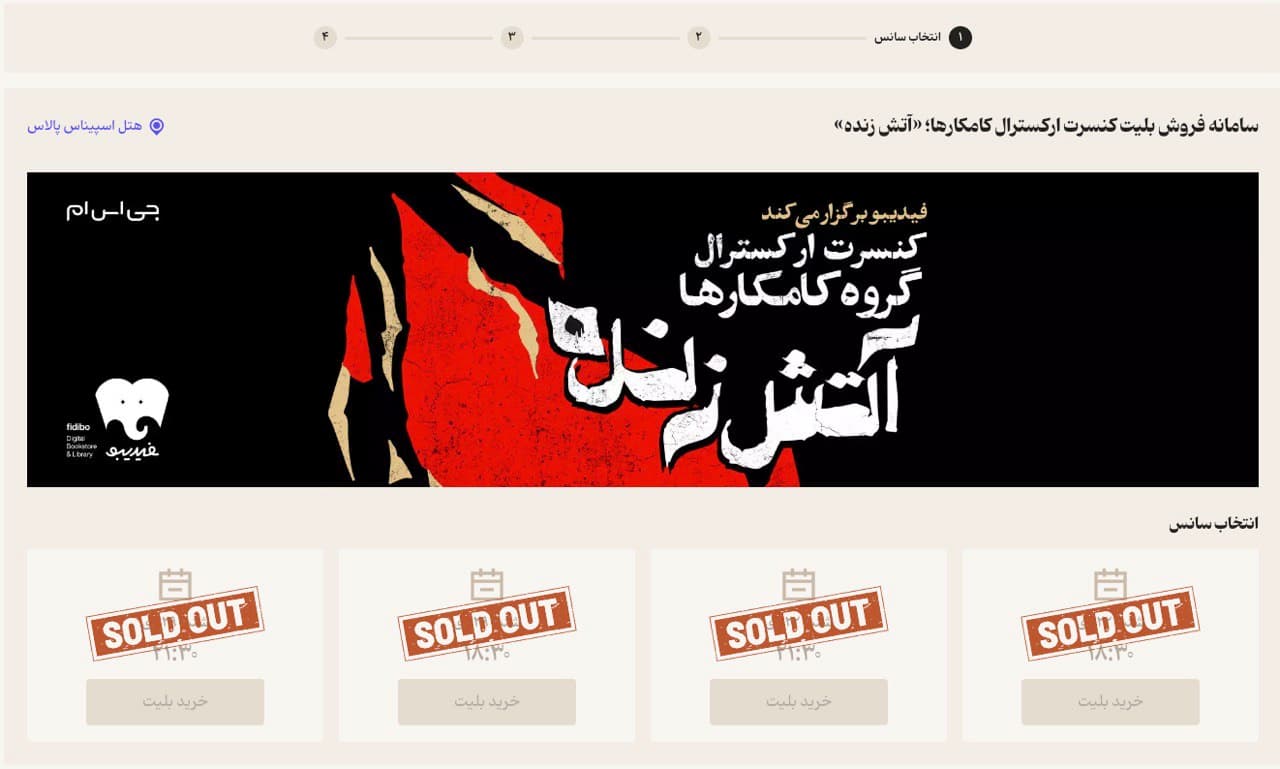How to Transform Tight Deadlines into Opportunities for Success

Recently, we faced a challenge: building a concert reservation system from scratch for Kamkarha at Fidibo within an incredibly tight deadline. Check out the project live at ticket.fidibo.com. Are you wondering how we pulled it off? Let us take you through the process.
At first, the task seemed insurmountable. Developing such a system typically requires months of planning, development, and testing. But as a small team with an "anything-is-possible" mindset, we rolled up our sleeves and dove in headfirst.
Keep Calm and Plan Strategically
When facing a seemingly impossible deadline, it’s easy to make poor decisions—choosing the wrong tools, prioritizing the wrong features, or, worse, derailing the entire project. So, what did we do?
We kicked things off with a marathon brainstorming session to break down the requirements, prioritize what was essential for a Minimum Viable Product (MVP), and divide responsibilities. Here's how we approached it:
- Understand the Big Picture: We gathered all the data and mapped out the entire project to ensure we had a clear perspective.
- Focus on Critical Functionality: We prioritized the main flow functionalities—the features that were necessary to deliver a working system.
- Leverage Teamwork: Collaboration and open dialogue were key. We ensured everyone understood what was feasible within the timeline.
- Embrace Chaos, but Stay Organized: Traditional planning methods like sprints were impractical in this scenario. We operated in controlled chaos, adapting as we went.
Don’t Reinvent the Wheel
Short-deadline projects are not the time for perfection. We resisted the urge to build everything from scratch or aim for clean, elegant solutions. Instead, we focused on functionality, speed, and practicality. As a wise person once said, "If you’re deploying clean code architecture, know that you’re probably doing it late."
In fast-paced projects, it’s better to get things working first and polish them later. Once the main functionality was stable, we started iterating and improving incrementally.
Plan for the Unexpected
Even with the MVP ready, we knew unforeseen issues could arise. We ensured there was a backup plan for any critical bugs. This “Plan B” mindset helped us mitigate risks and keep the project on track.
Refine the User Experience
Once the core system was stable, we shifted our focus to user experience. This stage involved:
- Making the interface pixel-perfect.
- Ensuring the system was intuitive and user-friendly.
- Squashing any lingering bugs that could impact the user journey.
Maintainability Matters
With the system live, our final step was ensuring its maintainability. We documented lessons learned and the entire development process to inform future projects. These short-deadline projects often serve as stepping stones, generating the income and credibility needed for larger, more ambitious endeavors.
The Takeaway
Delivering a concert reservation system within a short deadline wasn’t just a technical feat—it was a testament to what a passionate, dedicated team can achieve under pressure. This experience reminded us that while constraints can be daunting, they often bring out our most creative and resourceful selves.
Would we take on a challenge like this again? Absolutely.
When faced with tight deadlines, remember to stay calm, focus on what matters most, and trust your team. You’ll be amazed at what you can accomplish.
This article is co-authored by Samin Amiri. We hope our journey inspires you to turn challenges into opportunities.
